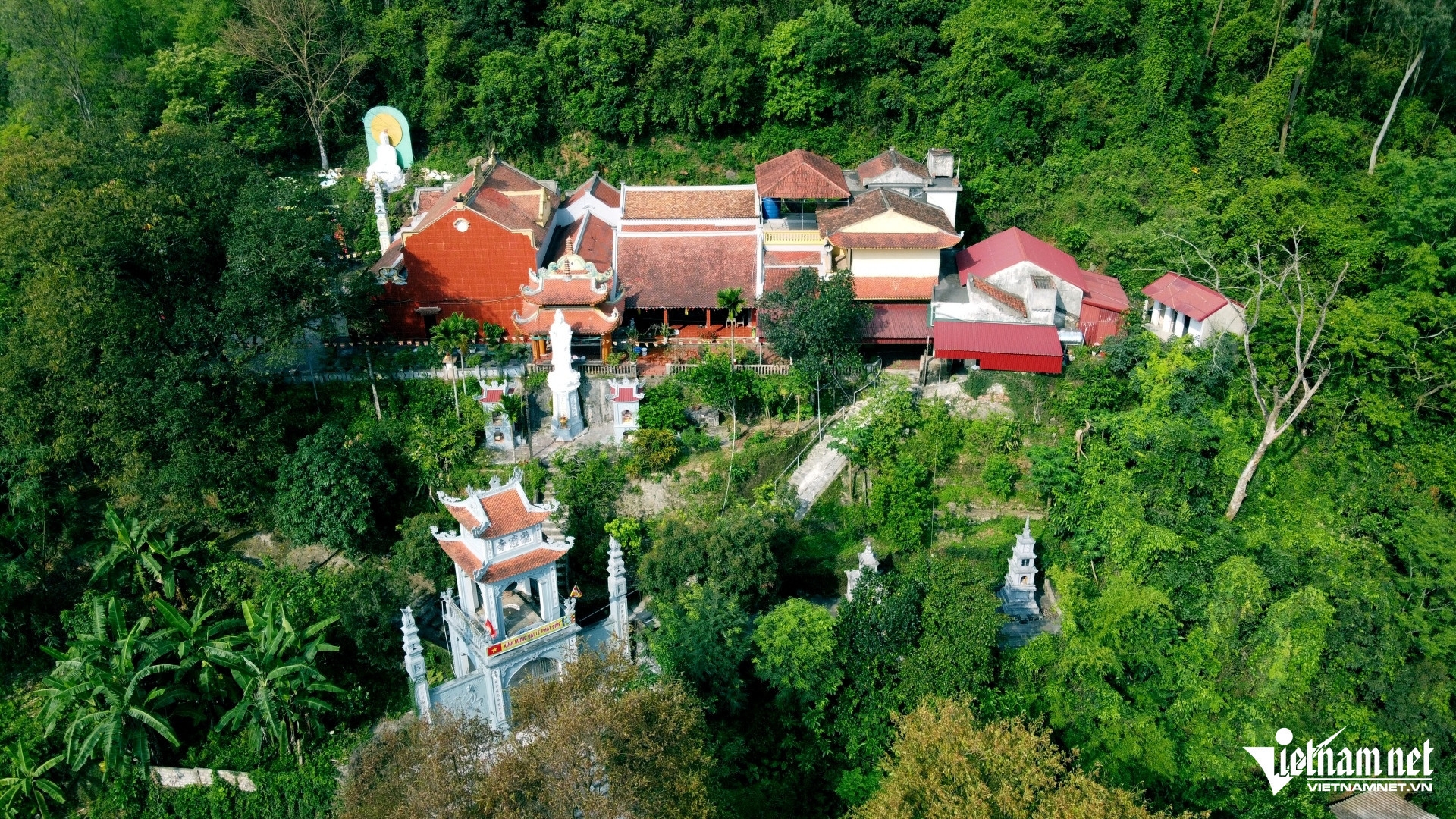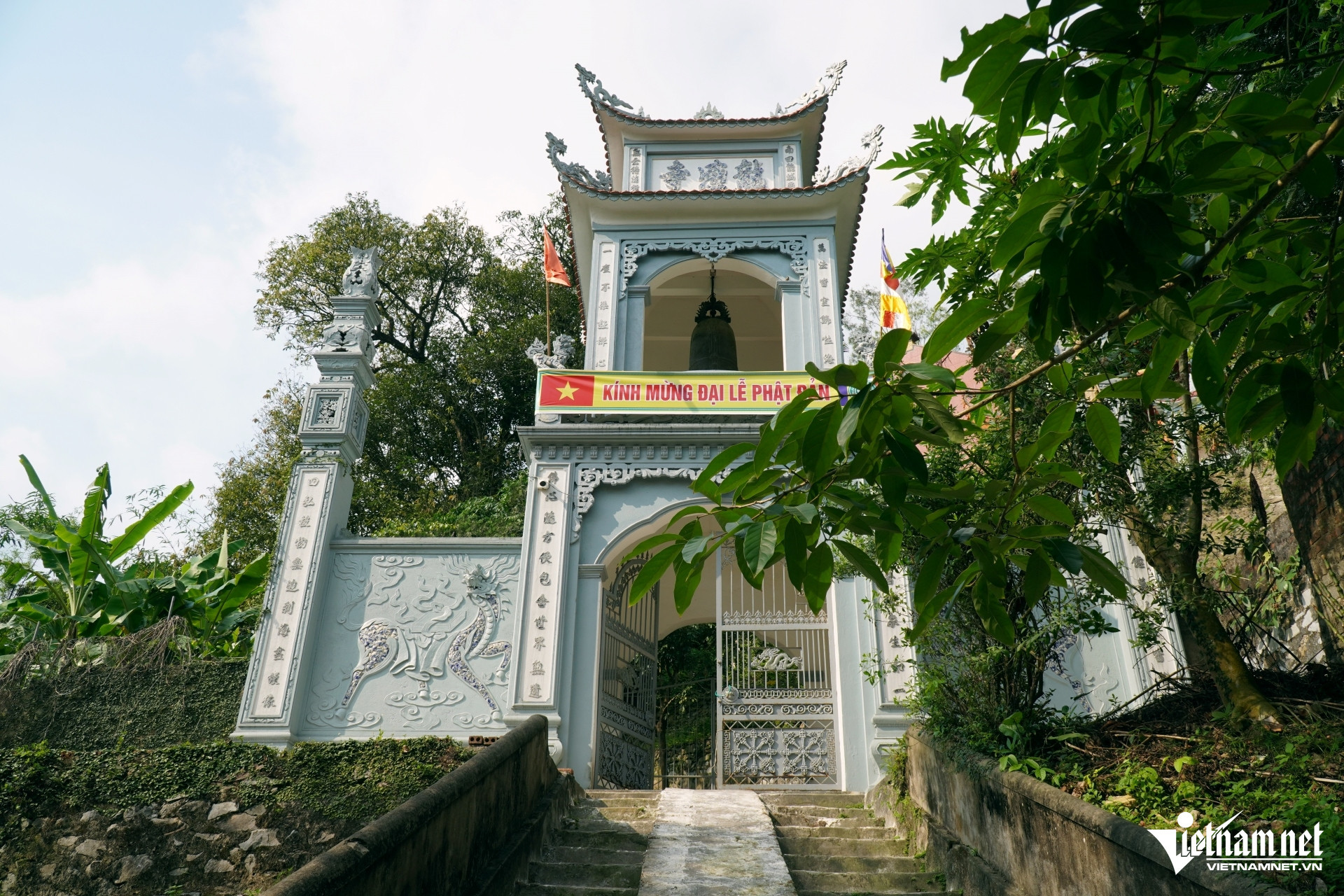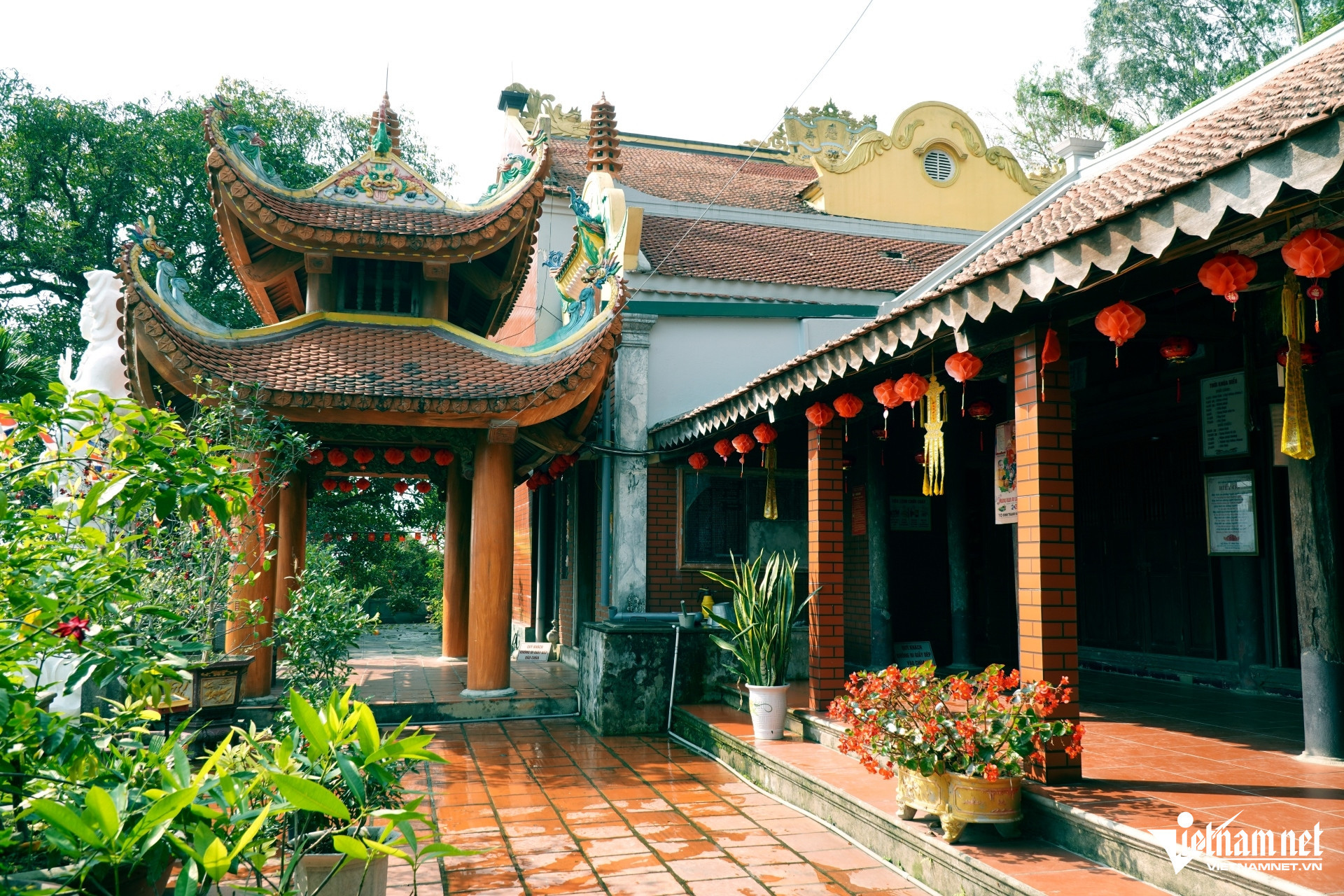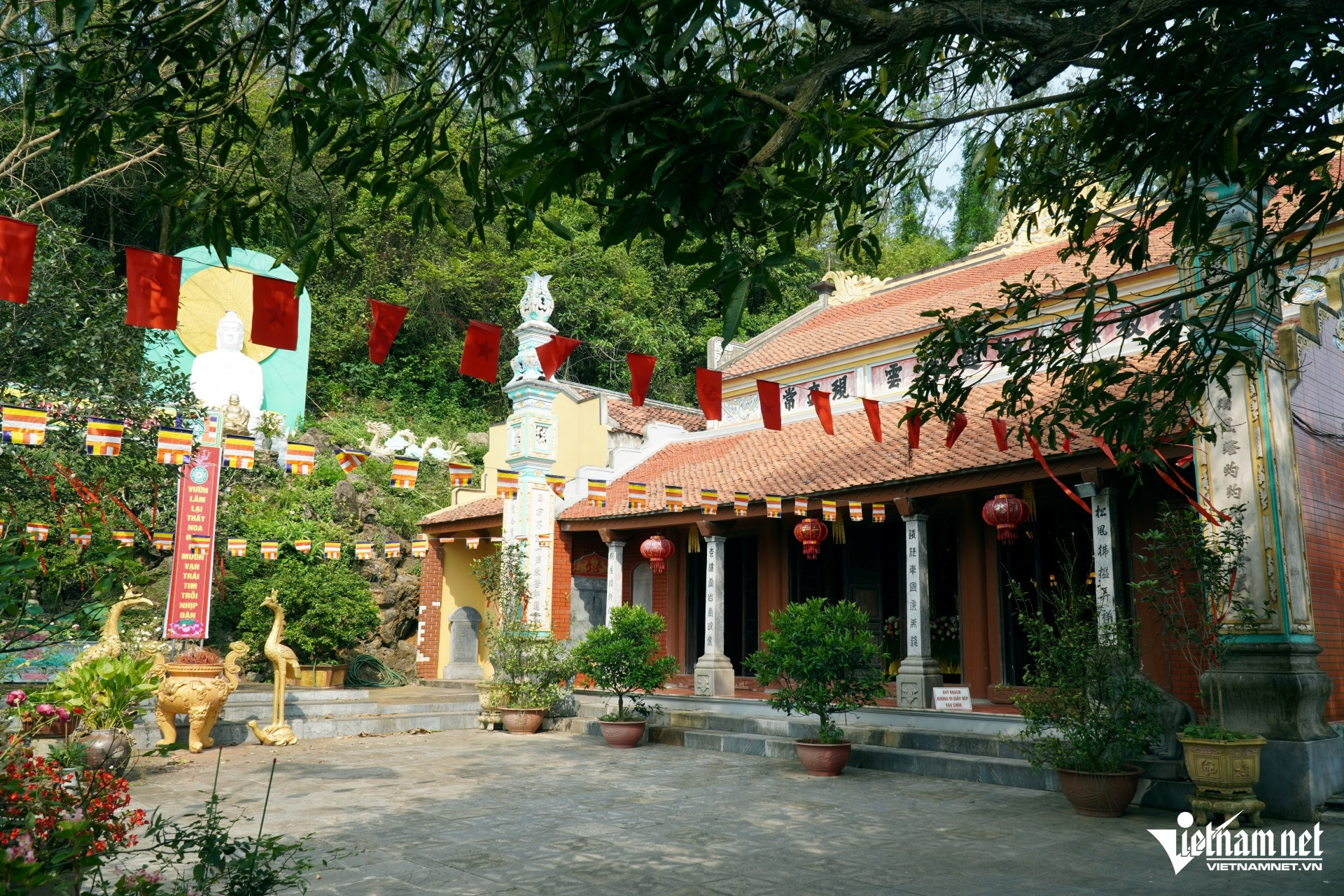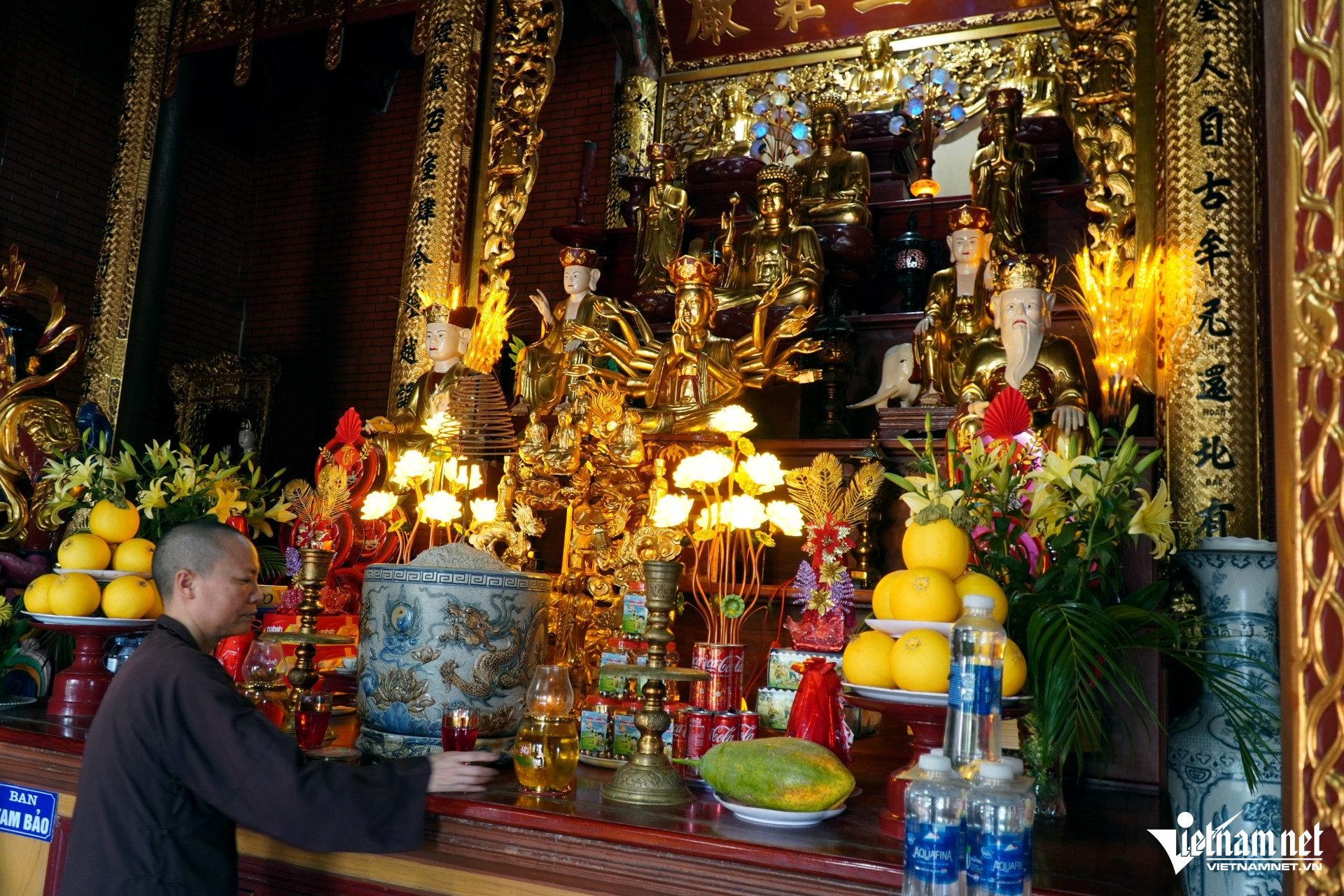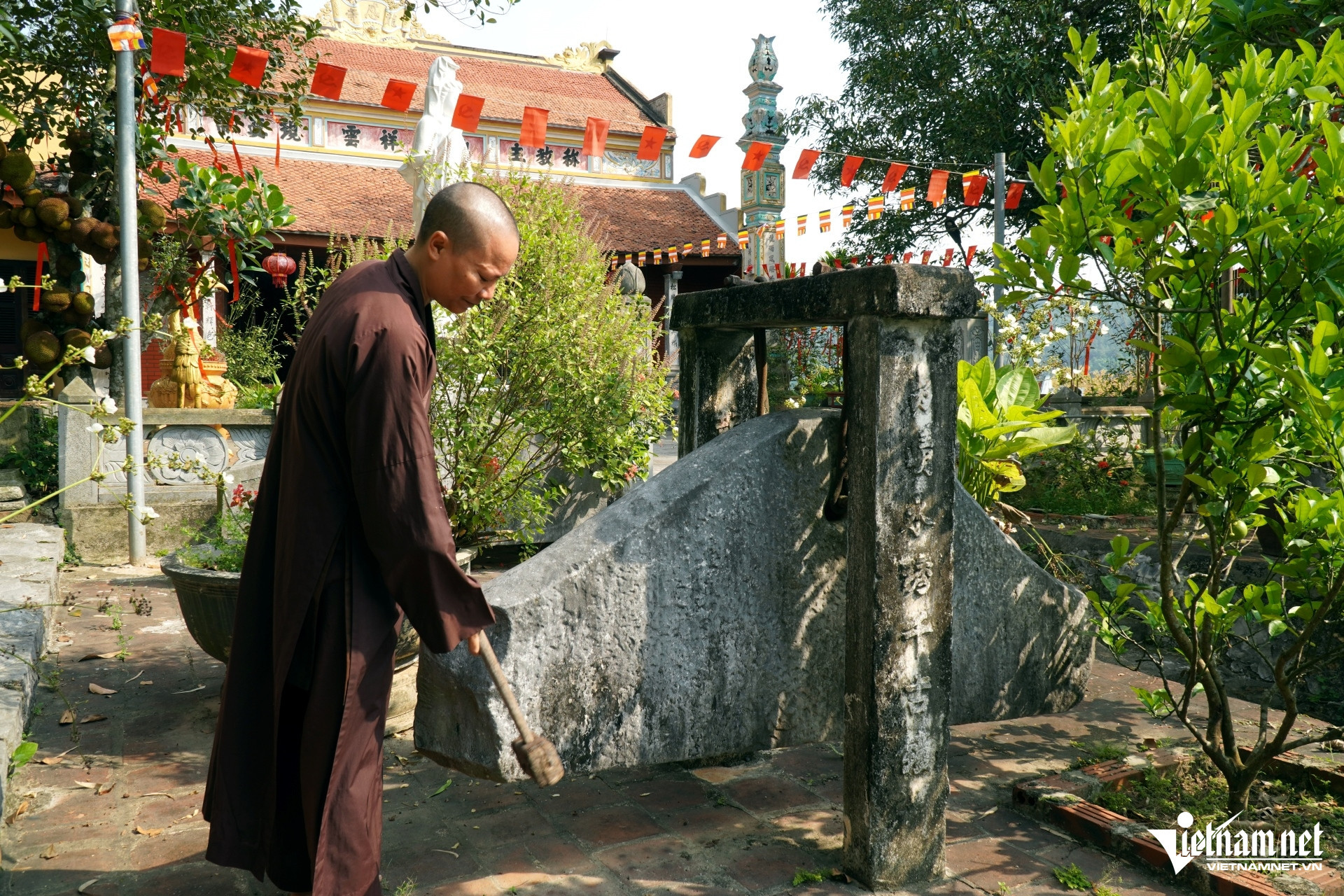According to Venerable Thich Dam Hao, Deputy Abbot of Long Cam Pagoda, the pagoda sits on Oc Son Mountain in Trang Cac village and was originally constructed during the Ly dynasty.
Historical records recount that in 1020, on his way to conquer the southern region, King Ly Thai To and his army camped on Oc Son Mountain. That night, the king dreamed of a mountain deity who promised divine support for the military campaign. After a victorious conquest, the king, in gratitude, ordered the construction of a pagoda on Oc Son Mountain named “Long Cam” - with “Long” meaning dragon and “Cam” meaning gratitude.
Later, during the Tran dynasty, King Tran Thai Tong (ruling from 1225 to 1258) also stopped at Long Cam Pagoda during his 1252 expedition against the Champa kingdom. He, too, dreamed of the mountain deity and was promised divine support. His campaign ended in victory.
In 1843, during the Nguyen dynasty, King Thieu Tri, while traveling to the north, ordered the restoration of Long Cam Pagoda and gifted it a bronze bell and an inscribed stone stele commemorating its legacy.
Over the centuries, Long Cam Pagoda has undergone multiple restorations. Yet it still preserves key relics from the Ly era, including four stone pillars with Han inscriptions in the main hall. Additional features such as the main altar, architectural details, stone steles, bronze bell, and stone gongs bear stylistic elements from the Le and Nguyen dynasties.
The pagoda complex includes an interconnected structure consisting of a three-entrance gate, courtyard, main hall, Mother Goddess shrine, Patriarch house, guest house, and monks’ residence.
The main hall comprises three compartments, featuring a wooden rafter structure known as "chong ruong, gia chieng," with four rows of columns - two main and two secondary. The beams are adorned with carvings of animals such as dragons, horses, and deer, sculpted separately and mounted on the brackets.
According to Venerable Thich Dam Hao, visitors are particularly fascinated by an ancient stone gong in the courtyard weighing approximately 300–400 kilograms. Though simple in design, it resonates with long, bell-like tones when lightly struck by hand.
The temple also preserves a second stone gong featuring cloud motifs. Originally from a pagoda in Thuong village, the gong was hidden in a pond decades ago after the original pagoda collapsed, to protect it from damage. It was later recovered and donated to Long Cam Pagoda.
"The biggest difference between the two gongs lies in the sound they emit. The original temple gong produces deep, resonant tones like a bronze bell even with a gentle tap. In contrast, the donated gong, no matter how hard it’s struck, only produces clanking noises," said Venerable Thich Dam Hao.
